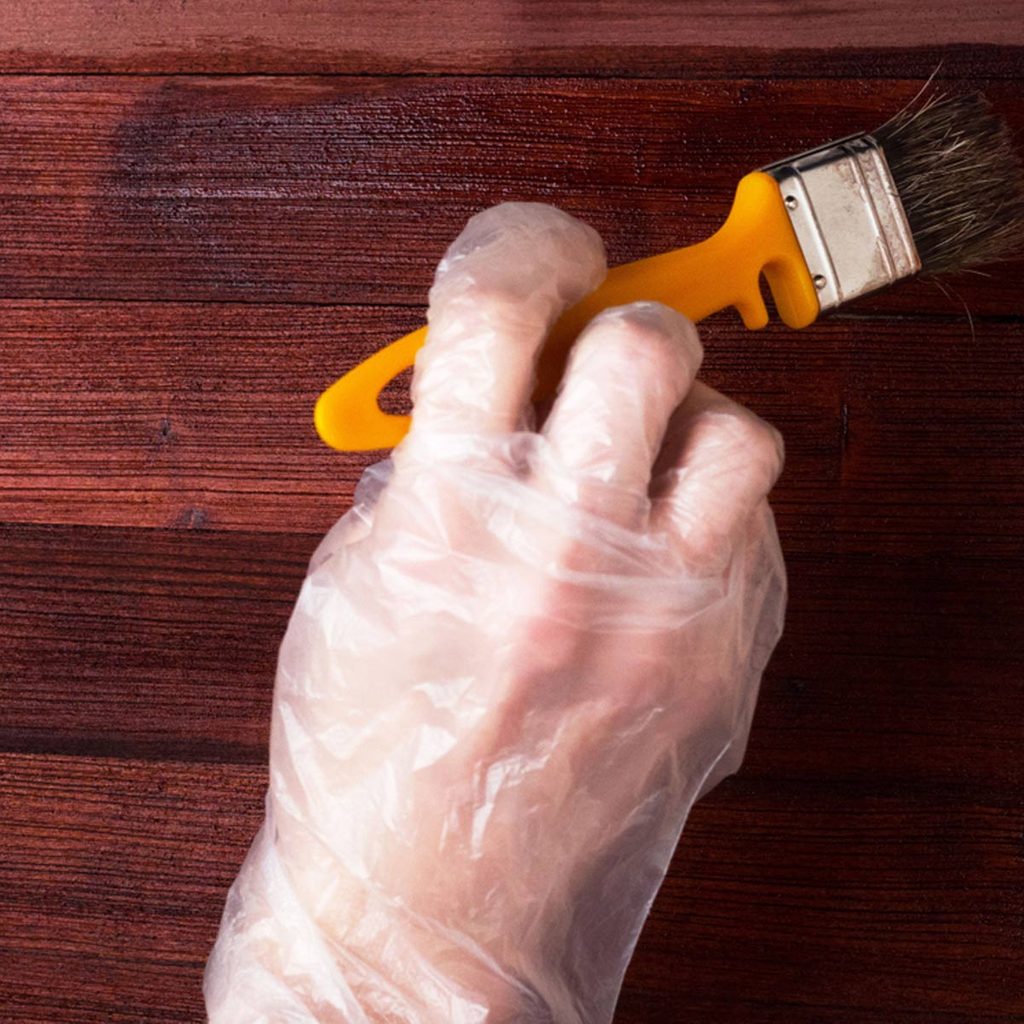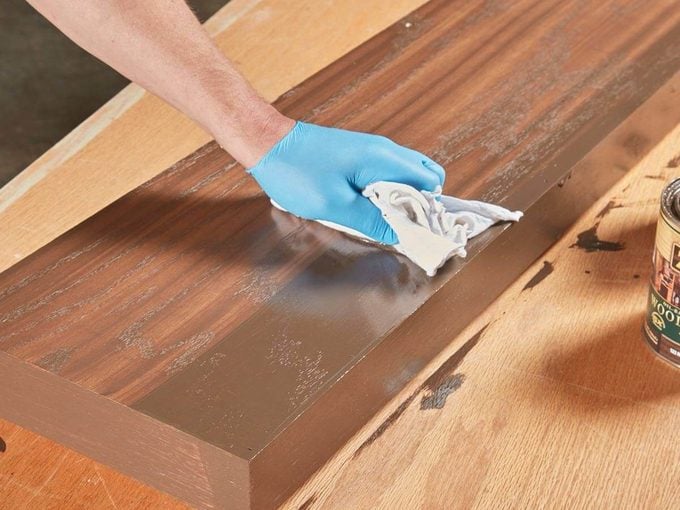What to Know About Wood Stains and Finishes
Updated: Feb. 07, 2024

Wood stains and finishes can make ordinary wood look gorgeous and gorgeous wood look ordinary. It's all in choosing the right product for the job.
Furniture building, cabinetmaking, wood trim installation and other wood-related activities require at least a basic knowledge of wood stains and finishes. As you learn about the different products, you’ll gain confidence in choosing the best fit for you and your project.
Keep in mind that all of the stain options mentioned here, applied properly, will work well for any indoor woodworking endeavor. Which you choose has much more to do with your color and application technique preferences than anything else.
On This Page
What Is Wood Stain?
Wood stains are a collection of liquid or gel products designed to color and protect wood. They come in a wide variety of types, but all include some sort of coloring agent mixed, suspended or dissolved in a solvent or “carrier” substance. This carrier can be oil, water, alcohol or polyurethane.
Here, we’ll be exploring wood stains designed for indoor projects. Exterior wood stains are different. They often give a less refined look, and are specifically formulated to stand up against precipitation and sunlight for as long as possible. Surprisingly, they don’t typically hold up as well against heavy foot traffic. Here are a few more tips for outdoor wood stain.
Understanding wood stain begins with knowing the types available, and their properties.
Types of Wood Stain
Oil-based stains
Almost always formulated with a linseed oil carrier, interior oil-based stains form a thick, deeply penetrating finish. They work great for most interior wood projects, especially those that require extra protection.
Oil-based stain tends to result in a more richly colored finish than you’ll get with other stain types. Oil-based stains are best applied with a rag, although they can also be brushed on. They’re slow drying, making it easier to achieve a smooth finish, because brush or wipe marks have longer to flow out as the stain settles and hardens.
Use mineral spirits to clean your brush if you use one. If you use a rag, let it dry when you’re done and then get rid of it.
Typical cost for oil-based stain is $20 per quart.
One to Try: General Finishes Oil-Based Penetrating Wood Stain is easy to apply, according to reviews, even for beginners. It comes in 14 colors. It’s meant to be brushed on, then the excess wiped off.
Water-based stains
Much faster drying than most oil-based stains, water-based products are touted as offering the best protection against mold and mildew while being better for the environment. They can be applied by brush or rag.
If you use a brush, be careful not to overbrush the product. Its quick dry time could lead to visible brush strokes if you’re not careful. Water-based stains don’t penetrate wood fibers as deeply as oil-based stains, so more coats are needed for the richest possible color. Most water-based stains are water soluble when they’re still wet, making cleanup easy.
An average cost for water-based stain is $30 to $40 per quart.
One to Try: Minwax Water Based Wood-Sheen Running Stain & Finish is easy to use, according to reviews. It’s perfect for people looking for an understated, not-too-shiny coating for their interior woodwork.
Gel-based stains
Thicker than oil- and water-based stains, gel stains are designed to make wood finishing easier by eliminating the need for careful brushstrokes.
Meant to be applied with a rag, gel-based stains give more or less color based on how hard they’re rubbed into the wood. This gives you a little more control over the intensity of the final look. They adhere well, and make it easier to hide natural defects in wood that might lead to blotchy results with other stain types. Like oil-based stains, gel products clean up best with mineral spirits.
The average cost of a gel-based stain is around $20 to $30 per quart.
One to Try: Old Masters Gel Stain gives rich color, according to reviews. It also goes on exceptionally evenly, hiding natural differences in wood grain absorption.
Lacquer
Lacquer is a finish, not a stain. It is a particular type of film-forming finish that cures by chemical reaction.
Apply lacquer on top of non-film-forming stains to add protection and sheen to the woodwork. It’s fast drying, so the stakes are high when using it. This is one reason many woodworkers choose to apply it with spray equipment rather than by hand. It cleans up with a volatile solvent called lacquer thinner, which has the same base ingredient as lacquer itself.
The average cost of lacquer is around $15 per quart.
One to Try: Minwax Clear Brushing Lacquer is quick and easy to apply. It’s ready for recoating in just two hours and doesn’t require sanding between coats, unlike many finishing products.
Varnish
Like lacquer, varnish isn’t a stain but a clear film-forming finish. Varnish is a broad term, referring to any wood finish that’s clear and forms a film. Polyurethane, lacquer and shellac are all considered varnishes. The solvent used to clean varnish depends on the particular product being applied.
Varnish costs from $10 to $30 per quart.
One to Try: Miniwax Fast Drying Polyurethane provides a smooth, satin finish that dries fast and is easy to recoat.
Wood Stain Tips and Safety
- Always wear rubber gloves when applying any finish.
- Wear protective clothes you don’t mind staining, making sure your arms and legs are fully covered. This is not the kind of project you do in your favorite t-shirt.
- Keep water, mineral spirits or whatever solvent you need to clean your application tools nearby.
- Be sure to ventilate your workspace when applying wood stain, particularly anything that’s not water-based. Get to know how long does wood stain takes to dry.
- Carefully read and follow specific manufacturer’s instructions for each stain product you use. Application techniques and cleanup instructions vary.
